Testing the Sony Bravia 7, we quickly noticed that this TV can do quite a lot. Although it is the "lowest" model from the Japanese manufacturer in the new 2024 lineup, it certainly doesn’t feel like a compromise. The picture impressed us with its deep blacks and the detail in bright scenes – thanks to Mini LED technology, which makes a difference. When we played movies in Dolby Vision, it was immediately obvious how much HDR adds life to every scene. The intense colors and great dynamics made watching evening shows a true pleasure for us. Daily use of this TV also positively surprised us. The Google TV system worked flawlessly, and the choice of apps was so extensive that we easily found everything we wanted to watch. The backlit remote is a small but practical addition – we really appreciated not having to fumble around for buttons in the evenings. The older content we watched improved in quality thanks to advanced image processing. When we tried the TV for gaming, it also made a good impression on us. The 120 Hz refresh rate provided smooth visuals, and the low input lag allowed us to enjoy fast-paced and dynamic gameplay. We particularly liked the Game Bar feature – easy access to settings during the game is something that every gaming enthusiast will appreciate. The TV handled even more demanding titles excellently. However, not everything was perfect. Only two HDMI 2.1 ports, one of which is dedicated to eARC, may pose a problem if someone plans to connect several devices simultaneously. Additionally, when we watched the TV from an angle, we noticed that the picture quality was not as good as when looking straight on – the lack of a layer to enhance viewing angles was noticeable here. Nevertheless, the Bravia 7 is a TV that positively surprised us. It combines excellent picture quality with functionality that works well for both everyday use and evening shows or dynamic gaming sessions. The minor limitations are noticeable, but they do not overshadow the overall experience, which definitely deserves attention from buyers.
- Matching (Score)
- Our verdict
- TV appearance
- Where to buy
- Contrast and black detail
- HDR effect quality
- Factory color reproduction
- Color reproduction after calibration
- Smoothness of tonal transitions
- Image scaling and smoothness of tonal transitions
- Blur and motion smoothness
- Console compatibility and gaming features
- Input lag
- Compatibility with PC
- Viewing angles
- TV efficiency during daytime
- Details about the matrix
- TV features
- Apps
- Playing files from USB
- Sound
Sony Bravia 7 (XR70) vs LG OLED G5
Direct compare
Check the best price offer:
Sony Bravia 7 (XR70)Check the best price offer:
LG OLED G5BRAVIA 7 / XR70
G54 / G51 / G55 / LW / LS

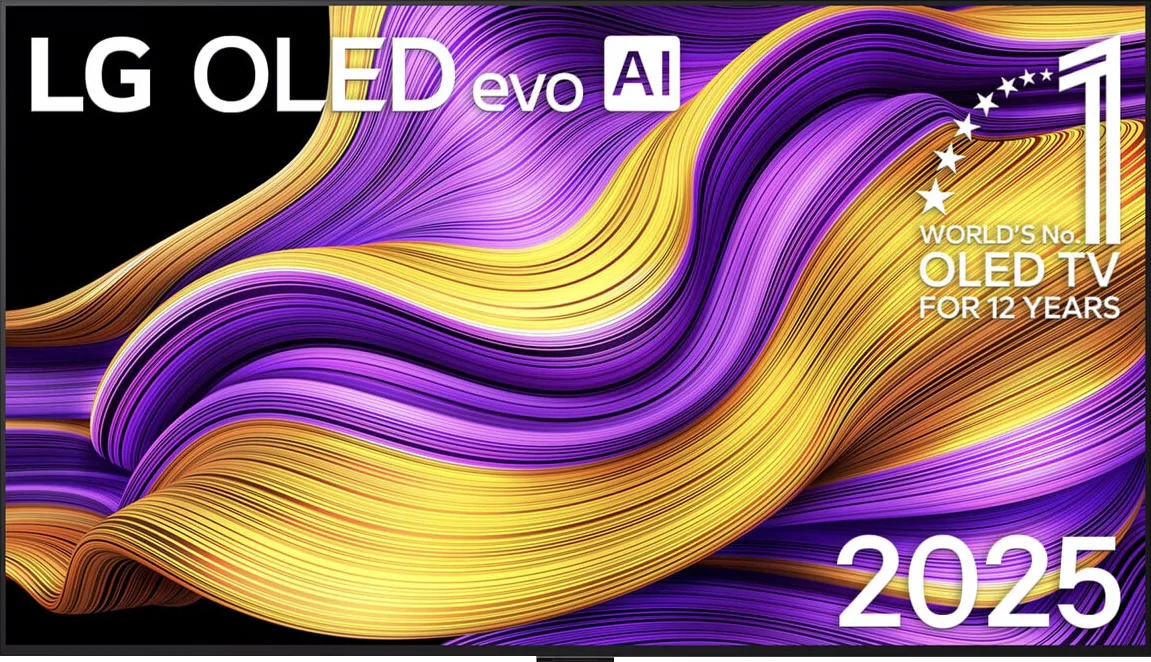
Panel type: LCD VA
Resolution: 3840x2160
System: Google TV
Model year: 2024
Complete the survey to find out the result

Panel type: WRGB OLED
Resolution: 3840x2160
System: WebOS
Model year: 2025
Complete the survey to find out the result

Overall rating
8.1
8.9
Movies and series in UHD quality
7.7
9.2
Classic TV, YouTube
7.6
9.2
Sports broadcasts (TV and apps)
7.6
9.0
Gaming on console
8.4
9.6
TV as a computer monitor
7.6
8.8
Watching in bright light
8.4
8.0
Utility functions
8.8
8.5
Apps
9.6
9.1
Sound quality
7.8
8.7
Complete the survey to find out what fits your preferences
Advantages
High brightness
Good contrast
Great Dolby Vision support
Google TV – intuitive system, easy access to apps, backlit remote
Very good built-in speakers
Great digital processing
Good for gamers - HDMI 2.1, many features, low input lag
Amazing black and contrast
Reference color reproduction after calibration
Very high brightness in HDR content
Outstanding cooperation with consoles and computers
Great motion fluidity - OLED panel 165Hz
Many features for gamers: VRR, ALLM, HGIG, low input lag
Excellent WebOS operating system with many applications
Superb handling thanks to the Magic remote with "cursor" function
Disadvantages
No expansion coating for the viewing angles at this price
Only 2 HDMI 2.1 ports - one of which is ARC
No support for DTS audio format
Worse (though still good) viewing angles than the predecessor G4
Different versions of the remote in derivative models – hard to predict which version we will get
Our verdict
The LG G5 is a television that not only continues but also expands on what we loved about previous models in the G series. Instead of taking the beaten path, LG opted for a new Tandem OLED panel – and it was a stroke of genius. Picture brightness? Simply, F E N O M E N A L. HDR effect? Close to reference. Colors after calibration? Nearly perfect. Motion smoothness, low latency, and gaming features? At an absolutely top level. The G5 performs well in movies and games, day and night, whether with a decoder, console, PC, or just the remote. Of course – this is not a product without flaws. It's a pity that DTS support is lacking, the viewing angles have worsened compared to its predecessor, and the remote may vary depending on the version. But when we look at the overall picture, it's hard not to feel that this is one of the best OLED televisions available on the market, and perhaps even the best. Definitely, when it comes to its versatility and picture quality without having to reach for extremely expensive models from competitors. If you're looking for a television for everything – for cinema, gaming, a bright living room, streaming content, or connecting a computer – the LG G5 is a device that simply delivers on every front without compromise.
TV appearance




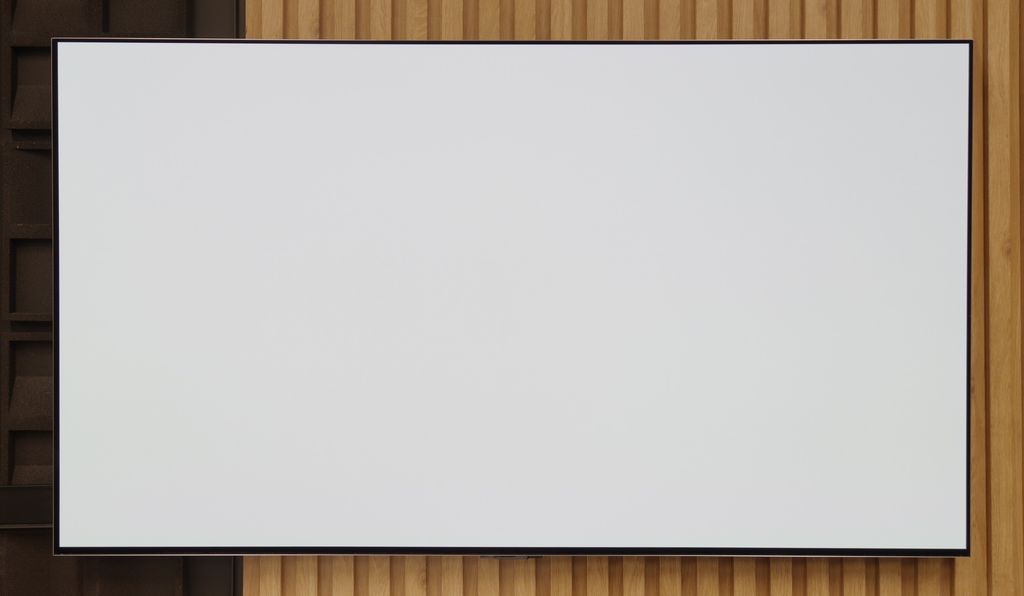
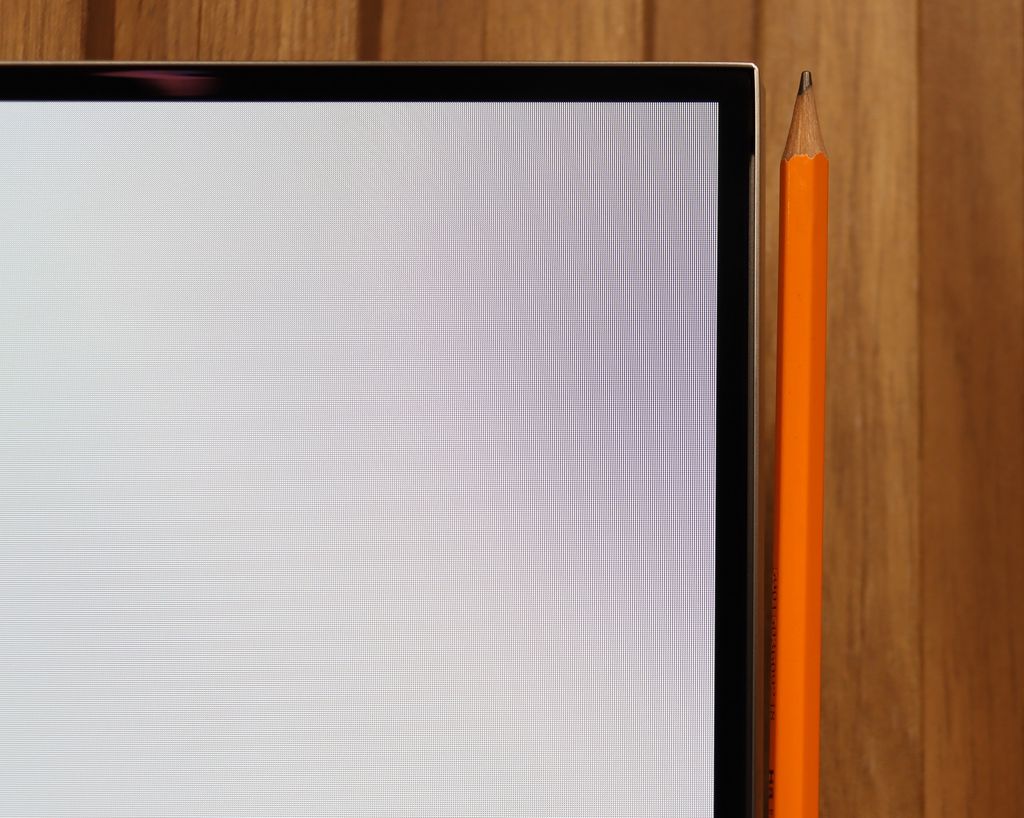
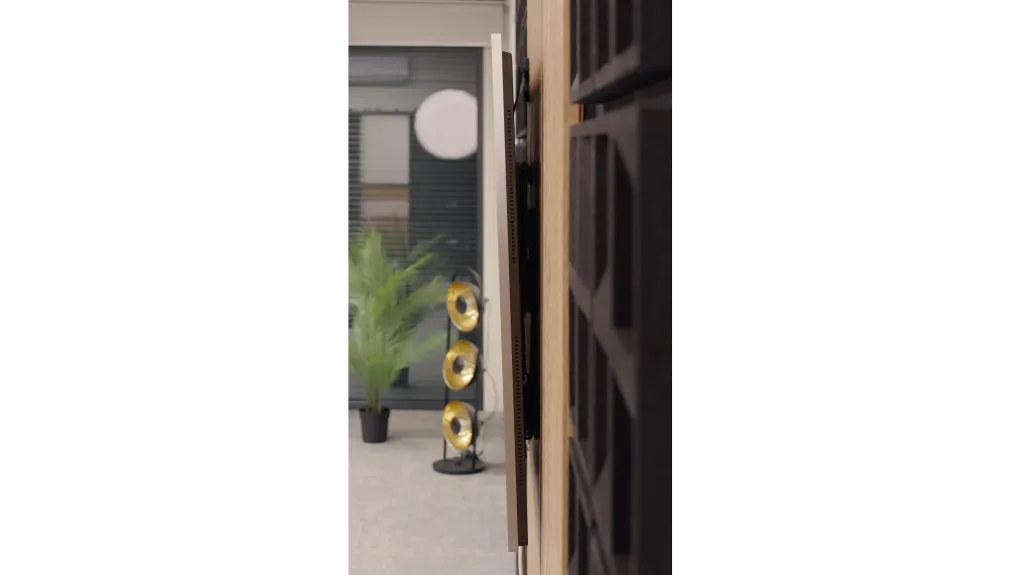
Where to buy
Contrast and black detail
7.7/10
10/10
Local dimming function: Yes, number of zones: 512 (32 x 16)
Contrast:

Result
190,000:1

Result
14,700:1

Result
45,000:1

Result
4,400:1

Result
4,800:1

Result
∞:1

Result
∞:1

Result
∞:1

Result
∞:1

Result
∞:1
Halo effect and black detail visibility:

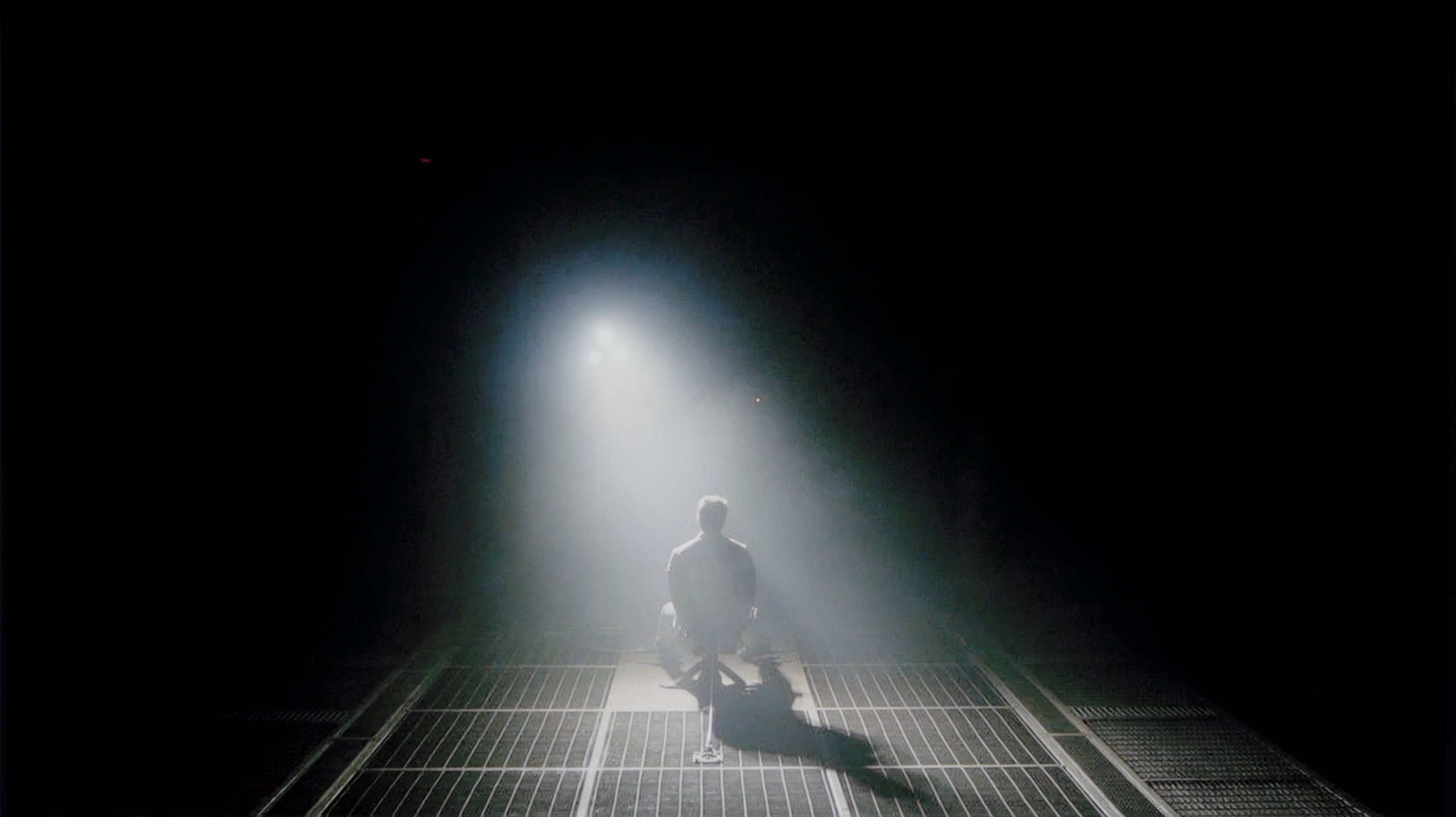
The Sony BRAVIA 7 television with a VA panel and MiniLED backlighting technology offers excellent black levels. The tested 65-inch variant is equipped with 512 dimming zones, which allows for very good contrast, especially in demanding movie scenes. Naturally, larger TV sizes have more zones, which positively affects contrast and image depth. During testing, in scenes from the movie "Oblivion," the BRAVIA 7 managed to depict dark and bright areas excellently, ensuring decent light separation (the light effect did not merge too heavily into one large spot) from deep black. However, as is often the case with televisions that have local dimming features, certain difficulties arise with small bright light elements. In more demanding segments (e.g., scenes 4 and 5), it can be observed that the television "struggles" to maintain high brightness for these elements, which affects contrast – bright objects are either too dark (in which case contrast results are poor) or a slight halo effect appears around them. In the scene from the movie Sicario 2, the influence of the zones is visible, which causes the aforementioned effect, but it is minimal. Despite these minor imperfections, the overall impressions are positive – the local dimming algorithm works really well, ensuring that the image retains high contrast, and the quality of blacks and details is satisfying.
LG G5, as befitting an OLED television, impresses with its contrast and black quality. In scenes with a lot of dark areas, the screen looks almost perfect, offering deep, absolute black and infinite contrast – an effect that still cannot be achieved on any LCD television. The new Tandem OLED panel does not introduce any negative changes compared to previous generations – blacks are perfect regardless of the content. Watching scenes from movies like The Revenant or Oblivion, you can clearly see the excellent separation of lights, without any blooming effect or brightening of dark parts. In this category, the LG G5 deserves the highest rating.
HDR effect quality
7/10
9.1/10
Luminance measurements in HDR:

Result
1322 nit

Result
624 nit

Result
1133 nit

Result
457 nit

Result
989 nit

Result
2346 nit

Result
2353 nit

Result
2399 nit

Result
2353 nit

Result
2012 nit
Scene from the movie “Pan” (about 2800 nits)


Scene from the movie “Billy Lynn” (about 1100 nits)


Static HDR10


Dynamic: Dolby Vision
Dynamic: Dolby Vision


HDR luminance chart:
LG OLED G5
HDR luminance
Luminance of RGB colors
Sony Bravia 7 (XR70)
HDR luminance
Since we know that the television performs well with contrast, let's check how it fares in terms of HDR effects. The luminance graph shows the very high capabilities of this model – 1500 nits is truly an impressive result. HDR effects are particularly striking in scenes where most of the screen is covered in light, as seen in the 1st, 3rd, and 5th test scenes. Minor shortcomings, typical of this technology, are still noticeable with very small light effects, such as in the scene from the movie "Sicario 2," where brightness drops to 500 nits. Although these are not stunning results, they can be considered decent. Additionally, it is worth praising the television for its high coverage of a wide color gamut – DCI-P3 at 96%, which allows for vibrant, saturated colors.
LG G5 with the new Tandem OLED panel brings the biggest change specifically in terms of the brightness of the television. And it’s quite impressive. This is truly an astronomically bright OLED. In every tested scene – whether it’s point lights or full-screen whites from the movie The Meg – the brightness on the G5 exceeded 2000 nits. Just a year ago, such values on an OLED were simply unimaginable. And here we are – the G5 comes close, and at times even surpasses the best Mini-LEDs on the market. A new feature of the Tandem OLED panel is the expanded color gamut coverage – and here the LG G5 performs almost perfectly. DCI-P3 achieves a full 100%, while BT.2020 maintains around 83%. These are some of the highest values currently available on the market – it’s hard to find any other television that comes close to such results, unless we are talking about the best displays with QD-OLED panels. The G5 has nearly reference-quality HDR – both in terms of brightness and color saturation. This is an OLED that can truly shine – and not just figuratively.
Factory color reproduction
6.7/10
7.8/10


Factory Mode
After calibration


Factory Mode
After calibration
The IMAX Enhanced mode on the Sony BRAVIA 7 television is definitely the best mode available on this model, although it is not without its flaws, as its name might suggest. The biggest issue is white balance – both in HD and 4K HDR content, there is a noticeable dominance of red color, which makes the image take on pinkish shades. This is particularly evident on the tested snow screen, where the pinkish hue becomes very noticeable. Errors in the Colour Checker test also confirm these deviations – although they are not catastrophic, there is a tendency to lean towards warmer tones. As for brightness characteristics, gamma remains at a decent level with a slight bump but without major issues. However, the biggest challenge is 4K materials. It is clear that the EOTF curve is significantly above the reference chart, which causes the image to become too bright.
Our test unit LG G5 struggled with some issues in the factory Filmmaker mode. And while the image might have seemed fine to most people, we knew that this TV was capable of much more. This mode had a clear excess blue tint in the white balance, resulting in a strong cooling of the image – particularly in HDR modes, where there was also a lack of red. The picture seemed cold, and its sharpness was artificially boosted and unnatural. Another significant issue was the brightness characteristic. In SDR content, the situation wasn't the worst, aside from a slight dimming of the entire image. However, it performed much worse in HDR materials – due to improper brightness management, the smallest details could completely disappear from the image, and larger, bright elements appeared overexposed and lacking gradation. Luckily, the G5 supports calibration using 3D LUT (a tool for professionals to calibrate colors), so we decided to take advantage of its professional background and see what it was really capable of. Because while it wasn't terrible even before calibration, the potential of this TV definitely deserved more.
Color reproduction after calibration
9.1/10
9.8/10




Sony BRAVIA XR70 offers a wide range of tools that allow for customizing the picture to personal preferences, which has enabled us to make significant adjustments to the settings. The white balance has been free of the issue of red hue dominance – snow no longer ends up with pink shades, which was previously noticeable. Although one can detect minor deviations at the end of the white balance chart concerning a drop in blue color, they are acceptable and hard to notice in everyday use. The Colour Checker test confirms that color reproduction errors are no longer as pronounced and rarely exceed a value of 2, which is a very good result. As for brightness, gamma, while not requiring significant improvement, has been slightly adjusted. However, the most notable change has been observed in the EOTF curve – the television no longer has issues with overly brightening the entire image in 4K content. However, upon closer analysis and enabling EOTF characteristics in films, certain limitations of the television arise due to the previously discussed dimming algorithm. Some small elements may be slightly more illuminated, but these errors are so minor that most users will not notice them. Overall, the calibration results are very, very positive.
After completing the calibration process using professional tools, we can confidently state that the LG G5 offers nearly reference-quality image. Most of the errors related to white balance and the ColorChecker test are below the value of 2, which is a phenomenal result, practically imperceptible to the human eye. And while one could still criticize that in HDR films the television tends to slightly dim the smallest elements of the image, in practice, this does not negatively affect the overall impression. Hats off to LG, because once again they provide the user with enormous possibilities for adjusting their display – and this, combined with very good parameters of the panel itself, results in an image that is truly hard to surpass.
Smoothness of tonal transitions
9/10
8.5/10












The Sony XR70 TV handles gradation excellently. In the test sequence, only a few scenes show slight issues with tonal transitions in dark areas, however, most of these problems disappear when the gentle gradation option is turned on. Overall, the TV offers great gradation that will satisfy even the most demanding users.
The smoothness of tonal transitions in the LG G5 is a clear step forward compared to last year's model. Not only has the brightness improved, but also the way colors blend, which the G4 sometimes struggled with. In the vast majority of scenes, the G5 has no issues with tonal transitions – there is no typical banding associated with WOLED technology, nor ugly breaks between colors. Of course, in very dark areas of the image and with shades of gray, minor imperfections can still be noticed, but these are things that the average viewer wouldn't even register. In short – it's really good.
Image scaling and smoothness of tonal transitions
8.5/10
8.7/10
Smooth transition function

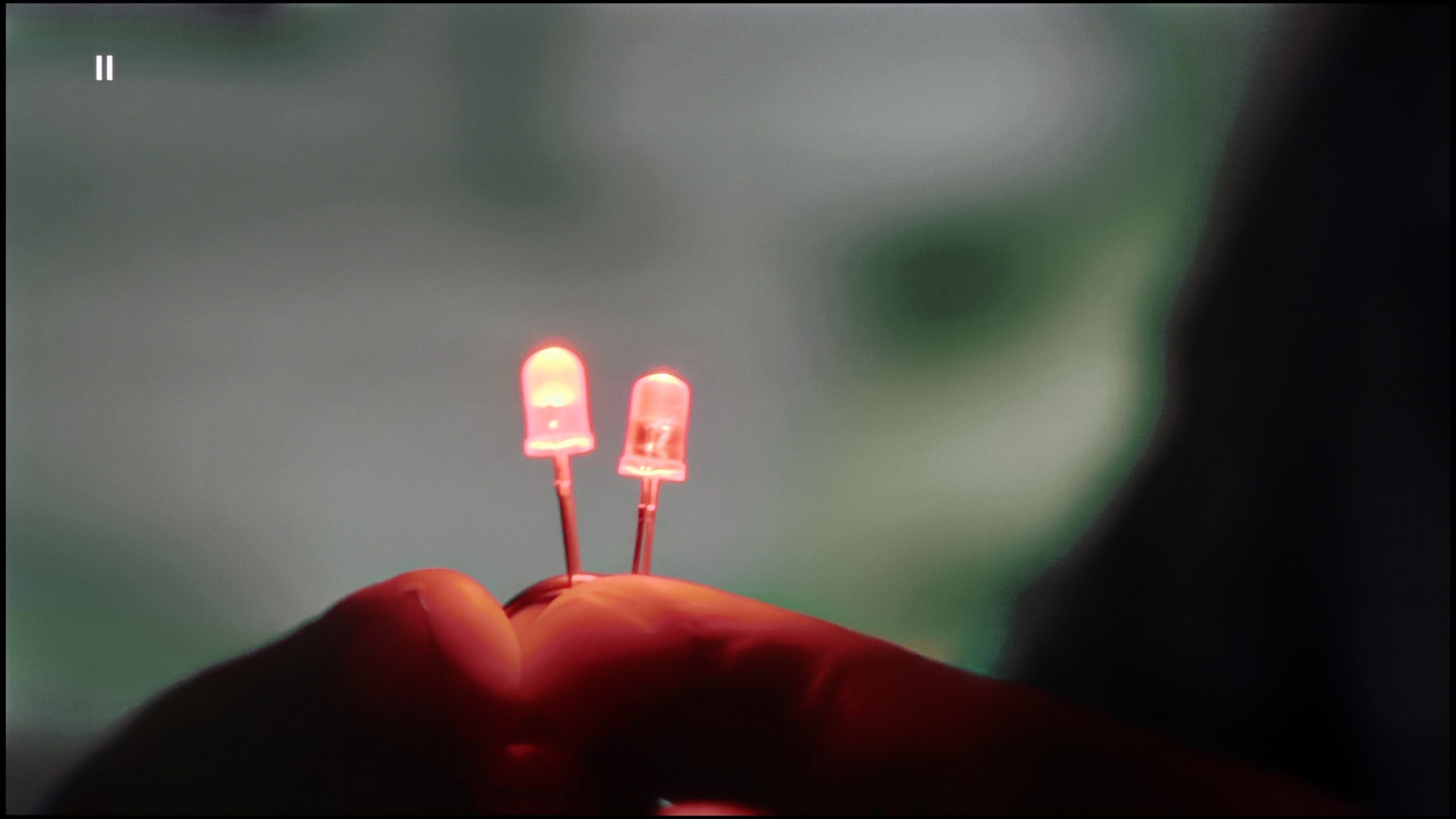
Image without overscan on the SD signal


Since we know that the television performs very well with high-quality materials, it is worth checking how it fares with lower-quality content. Here the television shows its potential, and the applied graphics processor works really well. On the test board with the light bulb, there are no visible issues with color transitions, and the smooth gradation function works very well – we recommend setting it to "Medium".
When it comes to digital processing, or so-called upscaling, the television sharpens the image quite a bit, which leads to slight aliasing, for example on branches in the background, but it does not remove desired details. Nonetheless, the overall appearance is truly attractive and may appeal to most users. However, if we prefer a softer, more plastic image, this effect can be reduced in the settings by adjusting the sharpening level to our personal preferences.
Upscaling and digital image processing in the LG G5 perform very well. The television handles lower quality content exceptionally, especially when the "Smooth Gradation" feature is set to a low level. In this mode, it effectively removes unwanted artifacts and issues with visible tonal transitions. It may also slightly smooth out some desired details, such as the subtle texture of clothing or skin, but importantly – it does not remove film grain, so it’s hard to say there’s a serious compromise here. It’s one of those options that’s definitely worth enabling.
The G5 also does well with upscaling, which is improving the quality of older materials. The test image with the model looked really solid – slight edging was visible, but that’s an effect that can’t be completely avoided. Additionally, there were no issues with overscan, which – contrary to appearances – is not obvious, even in 2025.
Blur and motion smoothness
8.3/10
9/10

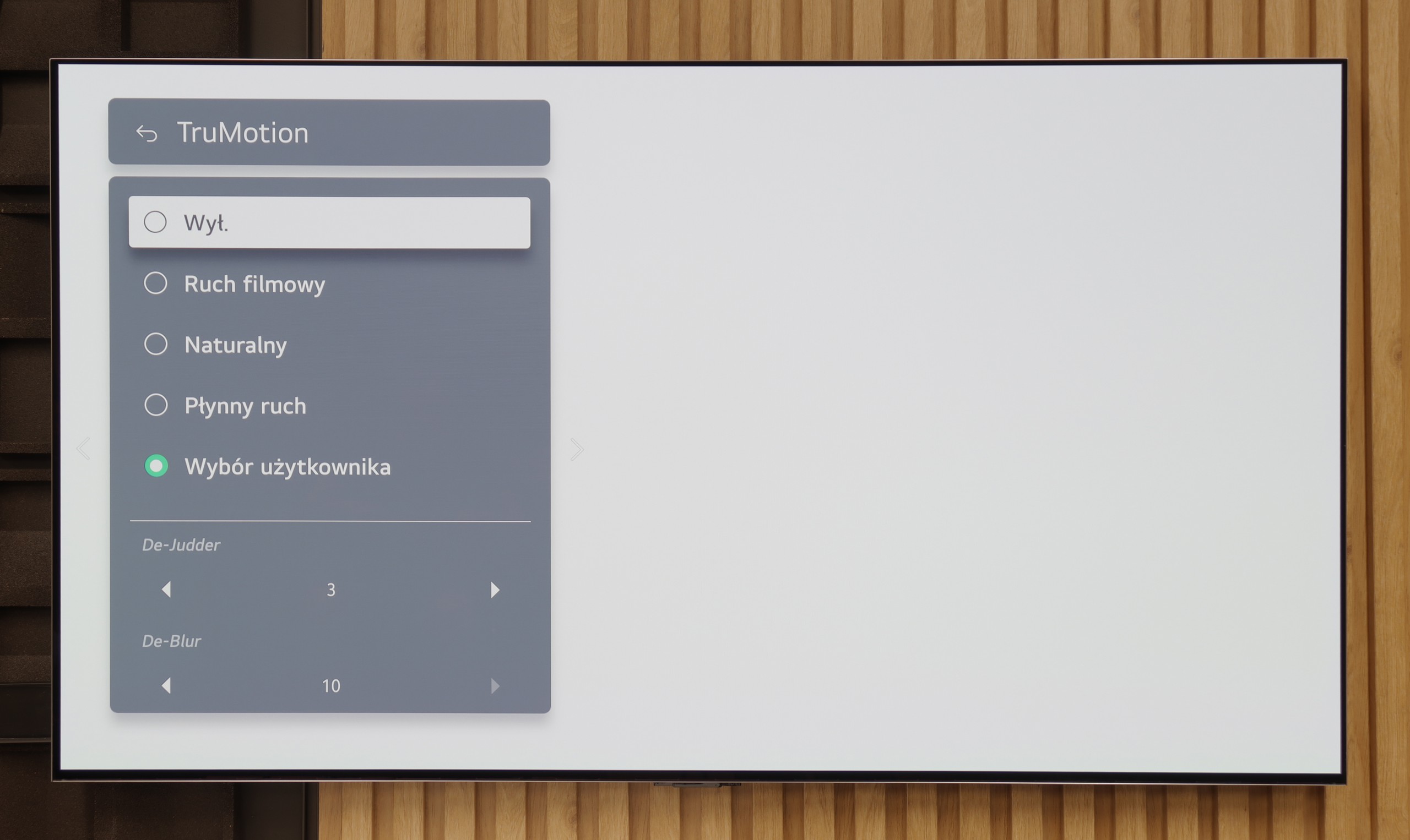
Blur (native resolution, maximum refresh rate):






Blur (BFI function enabled):



Image flickers in this mode

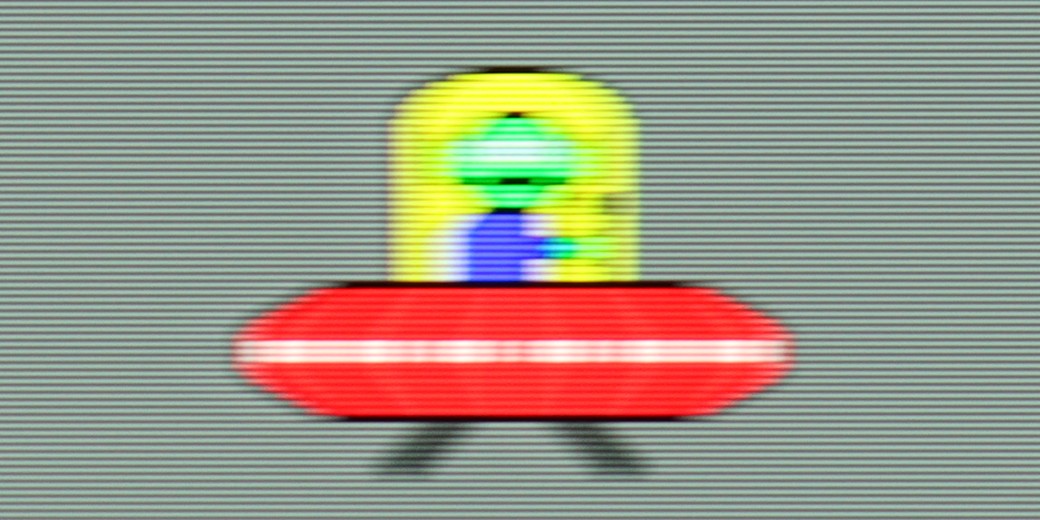

Smużenie ():
Smużenie (4K 165Hz):



The Sony BRAVIA 7 television with a 120 Hz panel will satisfy most users in terms of motion smoothness. Additionally, Sony offers the Motion Flow feature, which allows for the selection of three different picture settings, adjusting them to personal preferences: Smoothness – Film: This setting improves motion smoothness, giving the image a more cinematic or theatrical character. Smoothness – Camera: This setting provides even greater smoothness, useful when watching dynamic scenes such as sports broadcasts. Clarity: This setting focuses on minimizing noise and motion artifacts, resulting in a more stable and clear image.
The motion fluidity on the LG G5 is simply phenomenal. The TV is equipped with a 165 Hz refresh rate panel, and this combined with the instantaneous response time of the OLED matrix delivers incredible results. The picture doesn’t stutter or smear like on classic LCD TVs. Like most LG models, the G5 features a motion smoother, which can be useful when watching movies – of course, we're talking about the TruMotion mode. With the “De-Blur” and “De-Judder” sliders, we can adjust the smoothness of older material according to our preferences, whether we want to preserve the characteristic film stutter or move towards a more fluid, television-like effect.
Console compatibility and gaming features
8.1/10
10/10
- ALLM
- VRR
- VRR range48 - 120Hz40 - 165Hz
- Dolby Vision Game Mode
- Correct implementation of HGIG
- 1080p@120Hz
- 1440p@120Hz
- 4K@120Hz
- Game bar

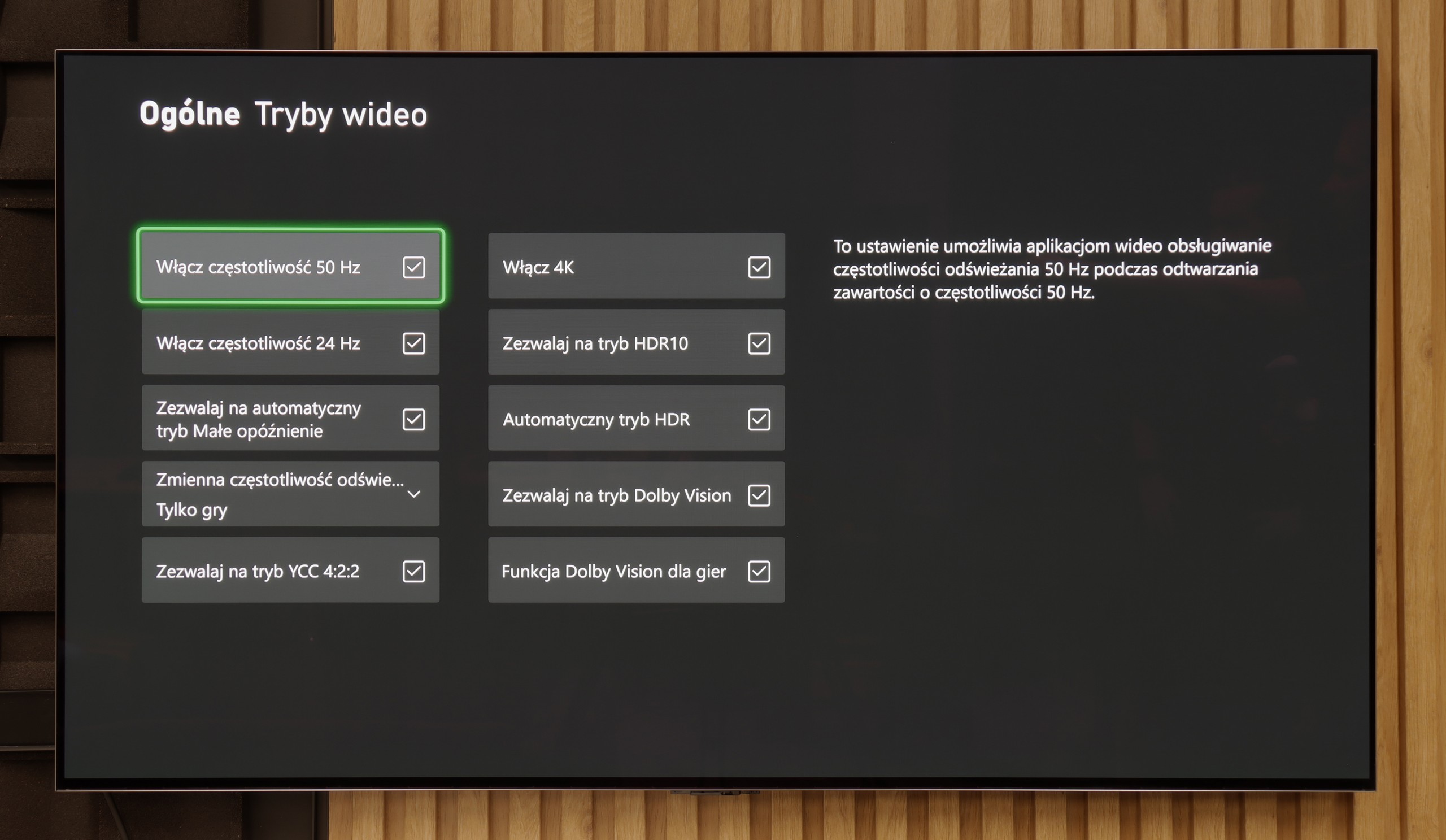

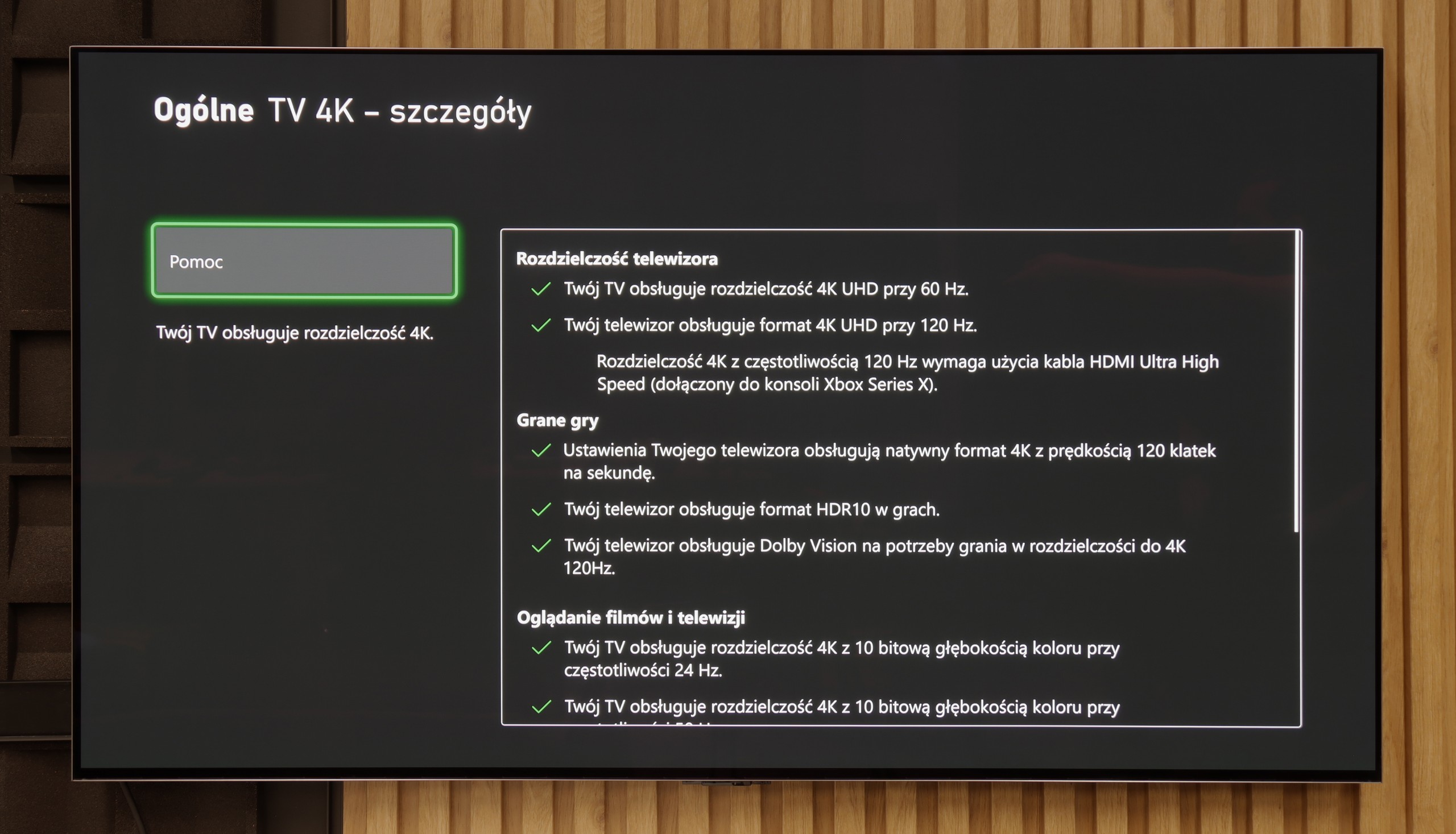

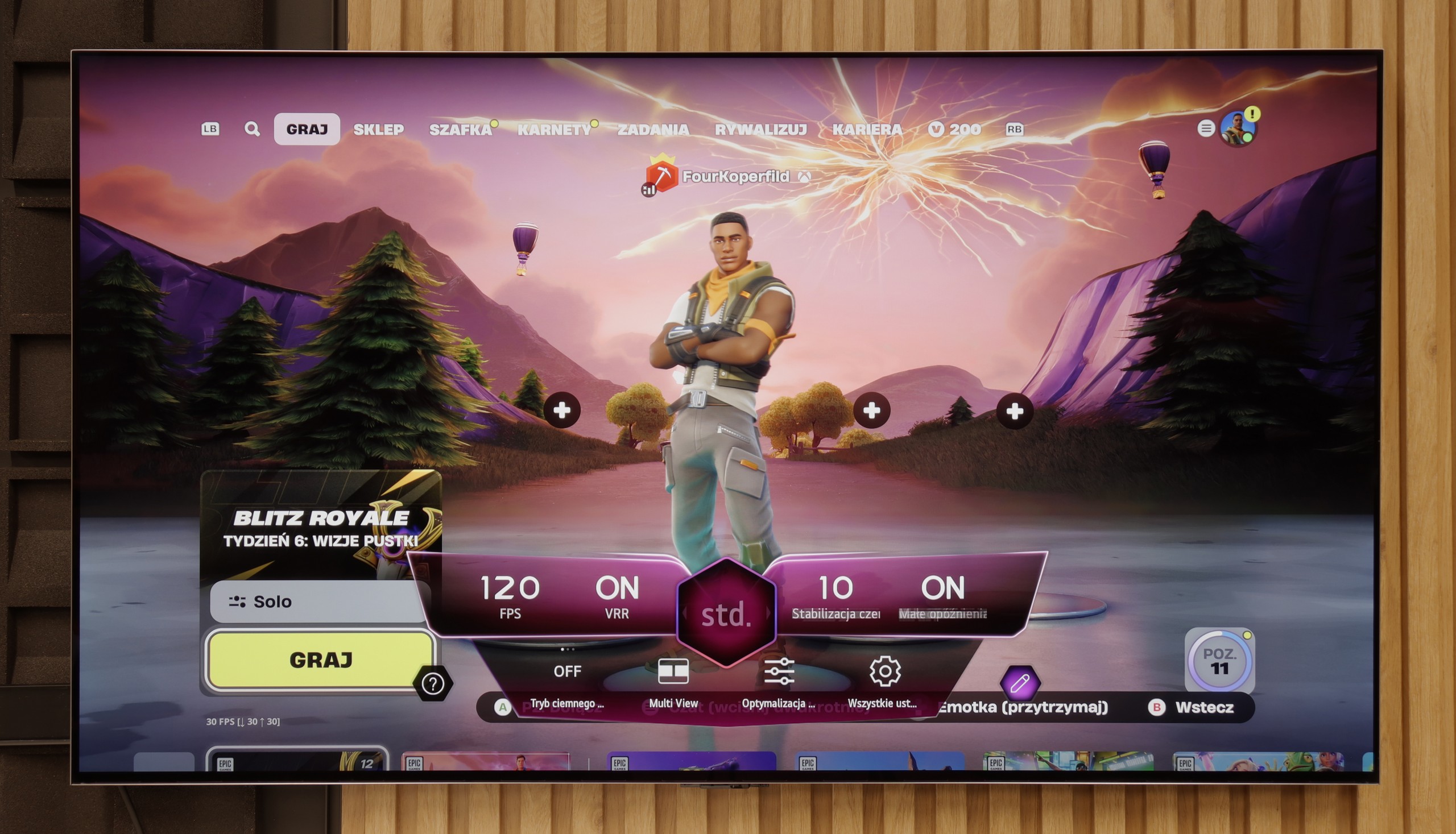

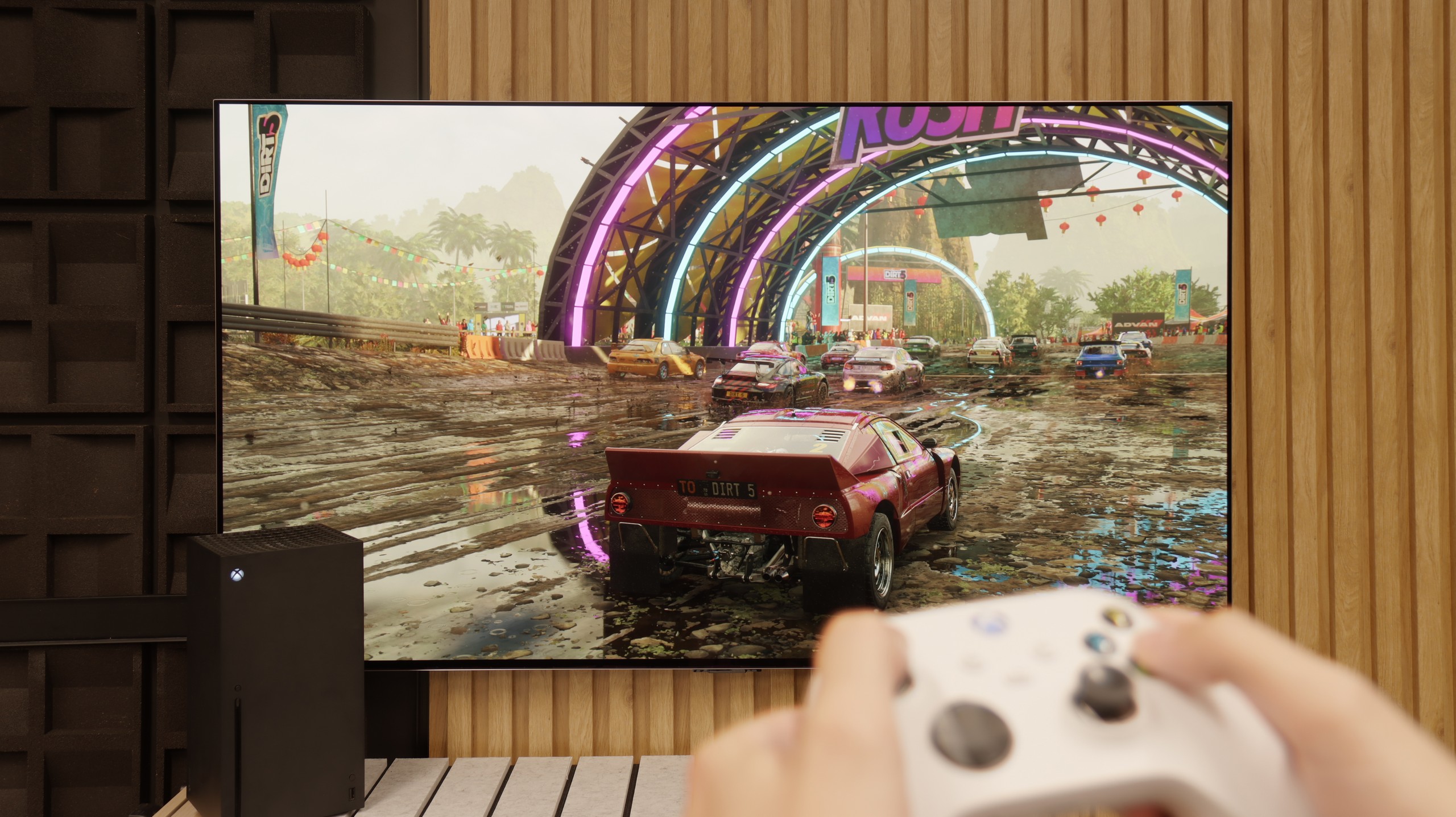
Sony Bravia 7 has significantly improved its capabilities for cooperation with consoles compared to previous models. The TV supports variable refresh rate (VRR), which eliminates screen tearing, and it is compatible with graphics cards, ensuring smooth display. The auto low latency mode (ALLM) effectively reduces input lag, which is crucial in fast-paced games. Dolby Vision with low latency additionally provides impressive HDR effects that look great during gameplay.
Sony Bravia 7 also offers a Game Bar feature that provides quick access to settings and allows monitoring of parameters during gameplay. An interesting option is the ability to enable a virtual crosshair on the screen, which can give a slight advantage in shooting games. However, compared to the Bravia 9 model, the HGIG feature in the Bravia 7 does not perform as well, which may be noticeable for more demanding gamers – especially since the HGIG mode is becoming more popular in the gaming world as the preferred method for reproducing HDR effects.
A downside is the lack of support for 1440p@120 Hz resolution, which could make gaming easier for users with less powerful graphics cards. Additionally, the Sony Bravia 7 is equipped with two HDMI 2.1 ports, one of which is often used to connect an audio system via eARC, limiting the number of available ports for connecting next-generation consoles.
Features for gamers? Perfect. That should be enough for you to know what level we are dealing with here. G5 is a television designed with gamers in mind, so we find literally everything one can expect from a gaming screen. There is Game Bar, support for high resolutions with high refresh rates – that is, 4K at 120 Hz, and even more, because the panel has a refresh rate of 165 Hz (which PC gamers will benefit from). The television supports variable refresh rates (VRR), automatic low latency mode (ALLM), and correctly supports HDR in games thanks to HGiG. All of this adds up to one of the best sets of gaming features available on the market. Well done, LG.
Input lag
9.7/10
9.9/10
SDR
HDR
Dolby Vision
Sony BRAVIA 7 provides remarkable results in terms of input lag, particularly with 120 Hz materials, where the delay is around 11 ms – this is an excellent result that will satisfy even the most demanding players. The Dolby Vision mode also deserves recognition, which is typically associated with higher input lag, but here it works really well, providing a comfortable gaming experience. However, we deducted 0.3 points for results with values above 20 ms for 60 Hz content, although we believe that for most users, this difference remains more of a placebo effect.
The input lag on the LG G5 is incredibly low. The response time to our actions – whether we're playing with a controller, keyboard, or mouse – is almost perfect. The controls are instant, and the game reacts exactly when we expect it to. The Dolby Vision Gaming mode does introduce slightly higher delays, but even then it's hard to complain about anything – in the worst case, the values hover around 20 ms, which for most players will be practically unnoticeable.
Compatibility with PC
7.6/10
8.8/10

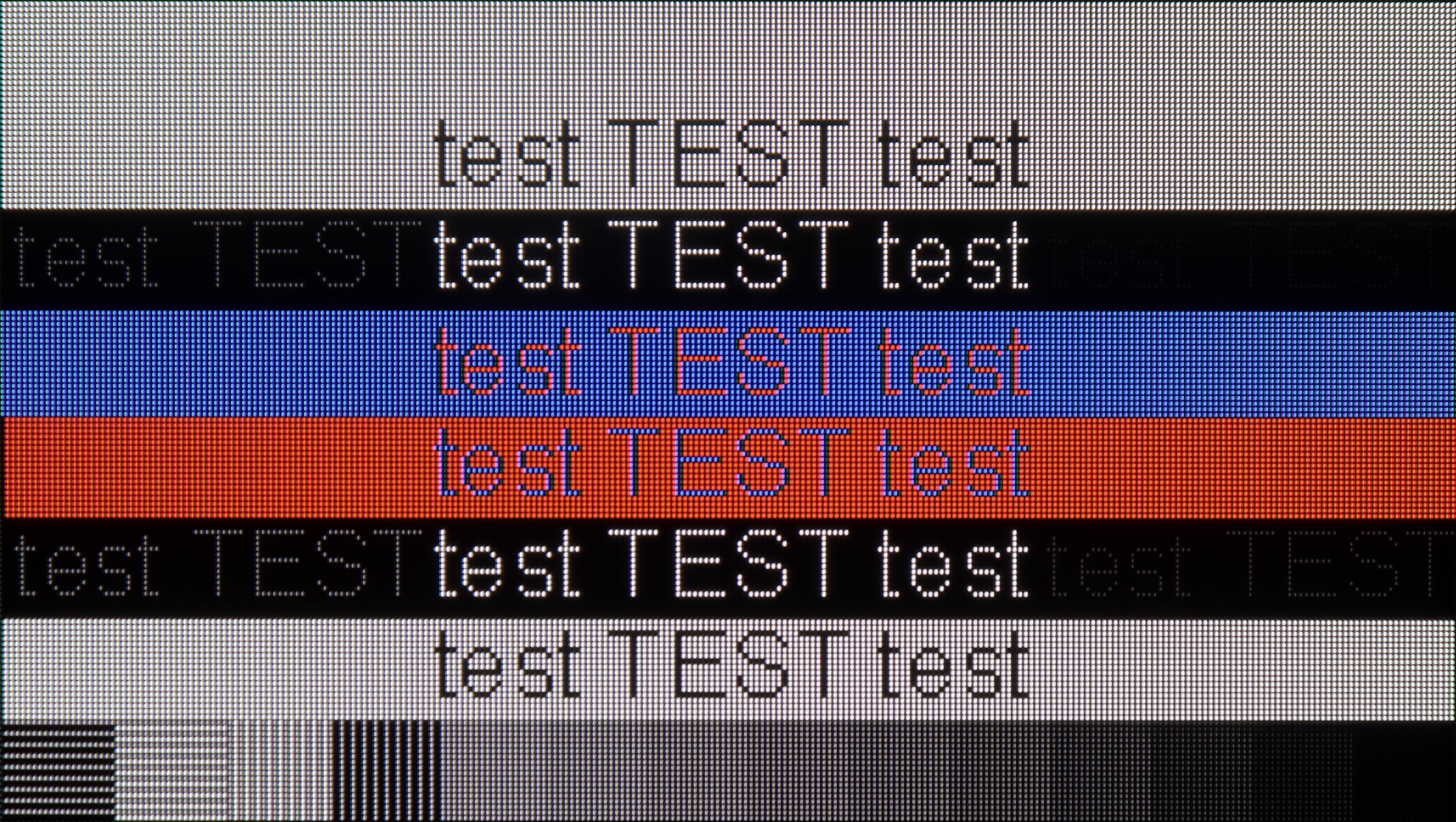
Collaboration with a PC? Almost ideal. The television, as we mentioned earlier, has great features for gamers – including those using a PC. On board, we find full G-Sync certification, a 165 Hz panel, and a super-fast input lag of around 5 ms. Thanks to the correct implementation of chroma 4:4:4, fonts are very readable – both the smallest and the largest. Although due to the WRGB subpixel layout, there may be slight shadows around the characters, for most users this effect will be virtually unnoticeable. The G5 performs excellently as a screen for work, entertainment, and gaming – also from a computer.
Viewing angles
3.4/10
7.5/10
The Sony BRAVIA 7 TV has poor viewing angles, which is typical for VA panels. The picture quickly loses quality when viewed at a larger angle – colors fade, and contrast decreases. Considering the price of the device, it's a pity that a coating wasn't used to expand the viewing angles, which would certainly improve the viewing comfort from different places in the room.
The viewing angles on the LG G5 are very good, mainly due to the use of the WOLED matrix. It's hard to find something to complain about here – the image does not significantly lose brightness or quality even when we look at the screen from the side. However, it must be fairly noted that there is some regression compared to the G4 model. The predecessor used an MLA matrix with micro-lenses, which offered slightly better light distribution. Also, compared to QD-OLED matrices, the angles are worse. Nevertheless, the overall viewing experience at an angle remains very good and should not be an issue in everyday use.
TV efficiency during daytime
8.4/10
8/10

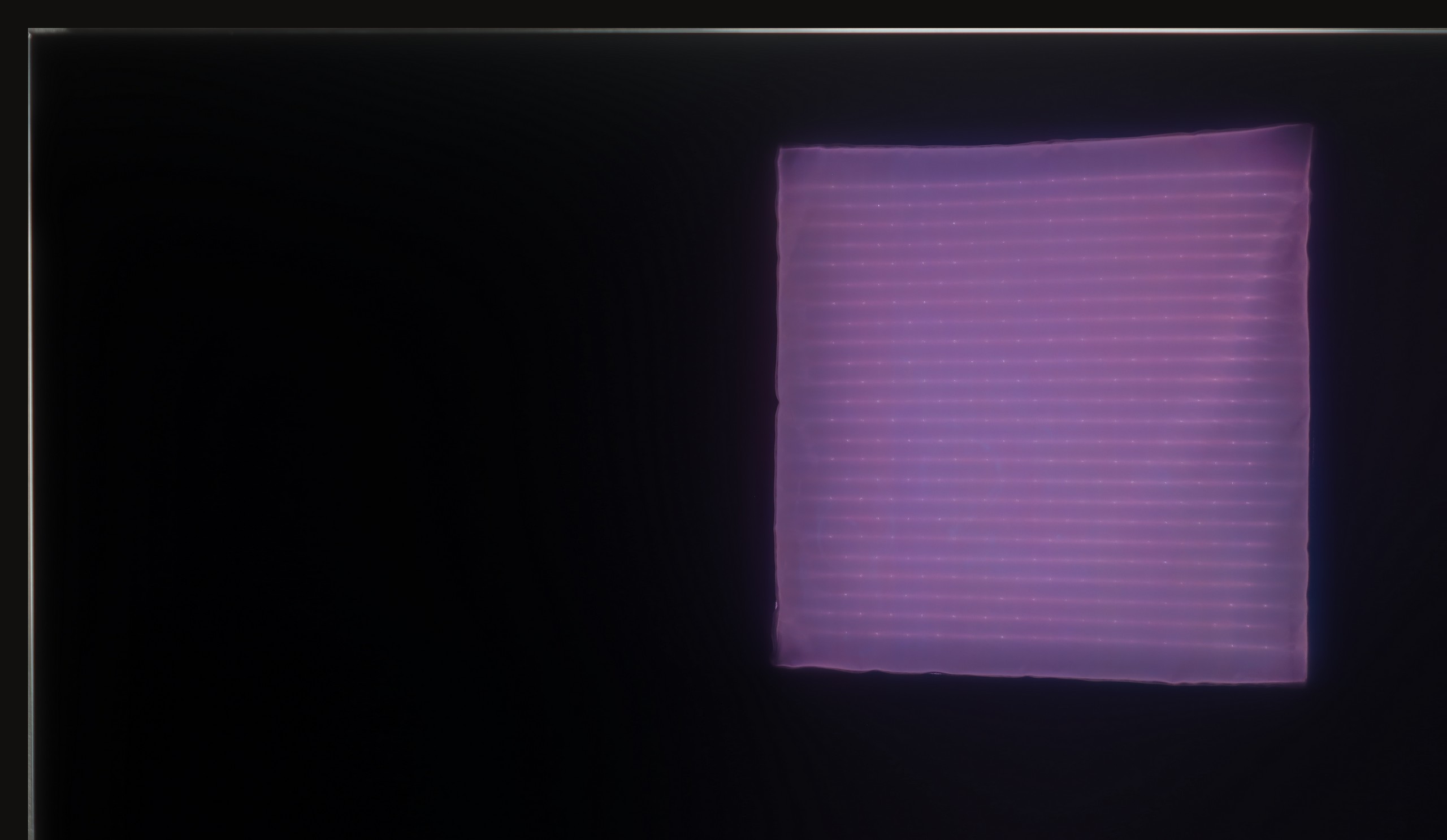


Matrix brightness
Average luminance SDR
LG OLED G5: 810 cd/m2
Sony Bravia 7 (XR70): 1014 cd/m2
BRAVIA 7 performs excellently when viewed in bright surroundings. The satin finish effectively suppresses reflections, while simultaneously minimal blurring of elements to the sides, resulting in very good visibility during the day. A brightness level of 1000 cd/m² in SDR mode is astonishing and ensures that the image remains clear even in well-lit rooms.
The LG G5, thanks to its very high brightness, performs excellently in bright rooms. Even with SDR content, the average brightness value is around 800 nits, which is significantly more than in standard televisions. It can easily handle a bright living room. Although the panel averages out reflections, it still maintains significantly better black levels and colors during the day than QD-OLED panels or matte-coated screens. The G5 will perform well in very sunny rooms—unless you really can't stand reflections on the screen. In that case, you will need to use blackout shades or consider buying a television with a matte screen.
Details about the matrix
Subpixel Structure:

Panel uniformity and thermal imaging:


TV features
8.8/10
8.5/10
- HDMI inputs2 x HDMI 2.0, 2 x HDMI 2.1 48Gbps0 x HDMI 2.0, 4 x HDMI 2.1 48Gbps
- Other inputsIR (remote)
- OutputsToslink (Optical audio), eARC (HDMI), ARC (HDMI)Toslink (Optical audio), eARC (HDMI), ARC (HDMI)
- Network InterfacesWi-Fi 2.4GHz, Wi-Fi 5GHz, Ethernet (LAN) 100MbpsWi-Fi 2.4GHz, Wi-Fi 5GHz, Ethernet (LAN) 100Mbps
- TV receptionDVB-T, DVB-T2, DVB-S, DVB-S2, DVB-CDVB-T, DVB-T2, DVB-S, DVB-S2, DVB-C
Classic features:
- Recording to USB (terrestrial TV)
- Recording programming
- Picture in Picture (PiP)
- RF remote control (no need to aim at the screen)
- Backlit remote control
- Teletext
- Audio only mode
- Bluetooth headphones support
- Simultaneous Bluetooth headphones & TV audio
Smart features:
- AirPlay
- Screen mirroring (Windows Miracast)
- Voice search
- Voice search in native language
- Ability to connect a keyboard and mouse


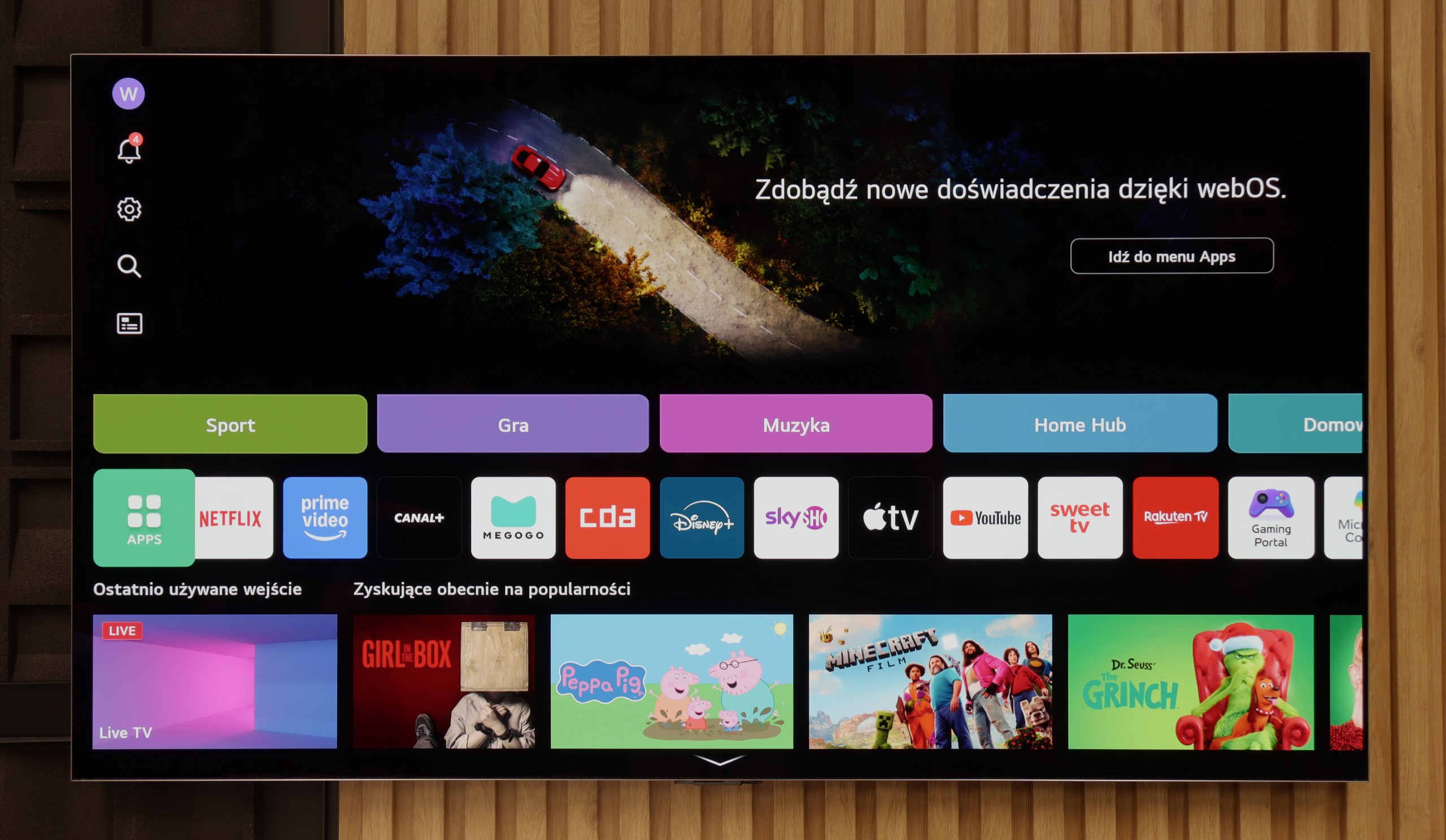
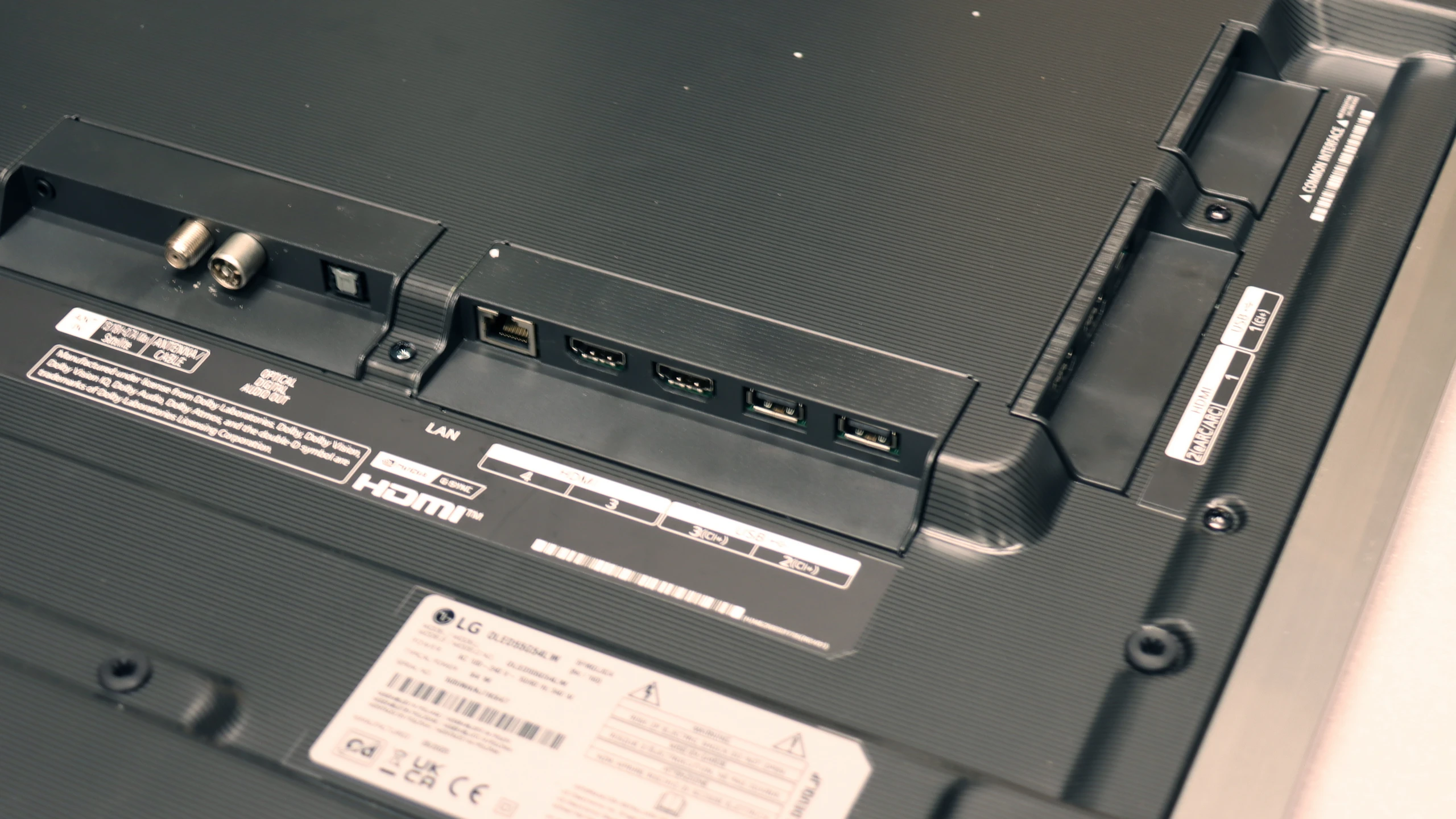
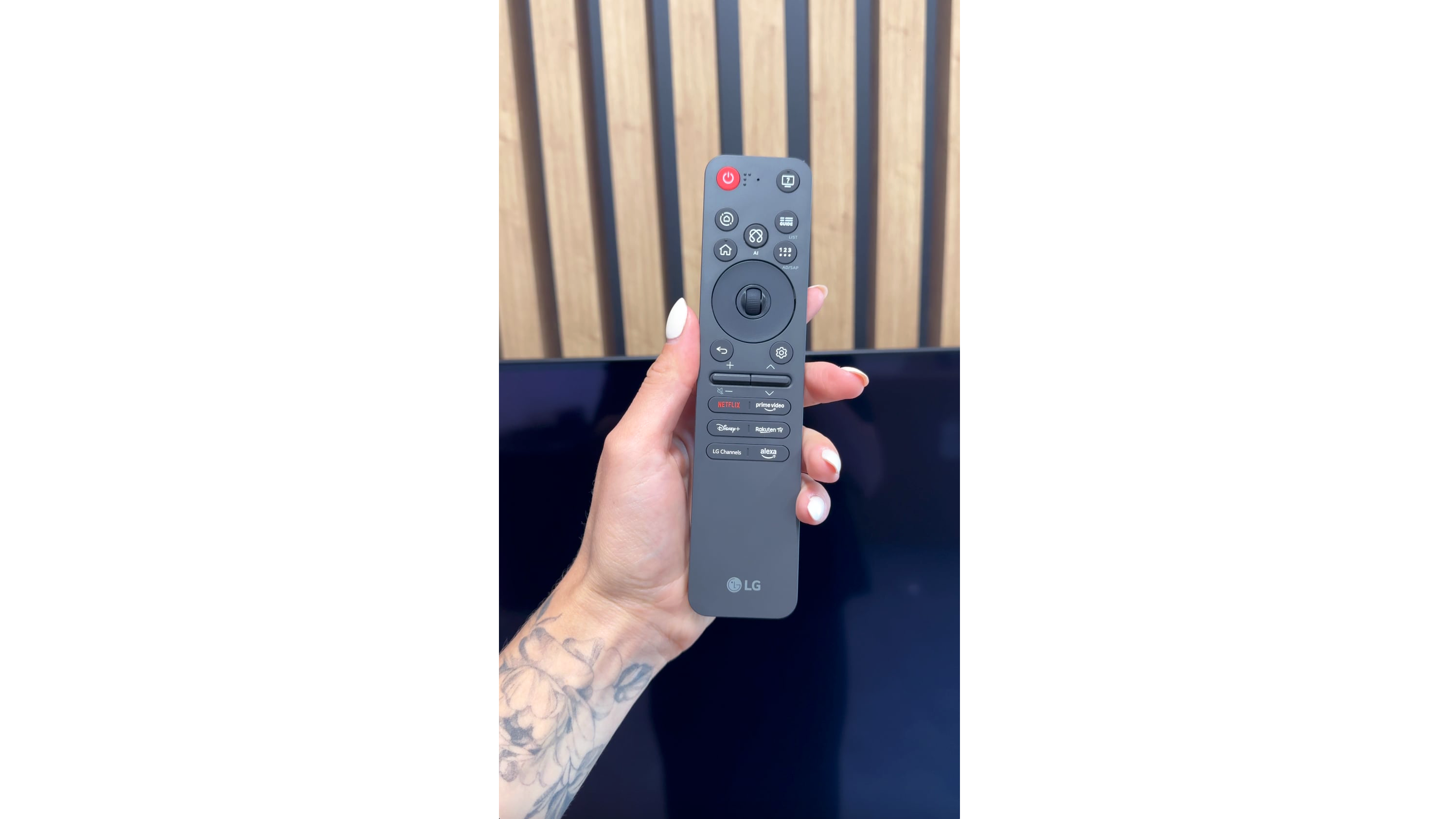
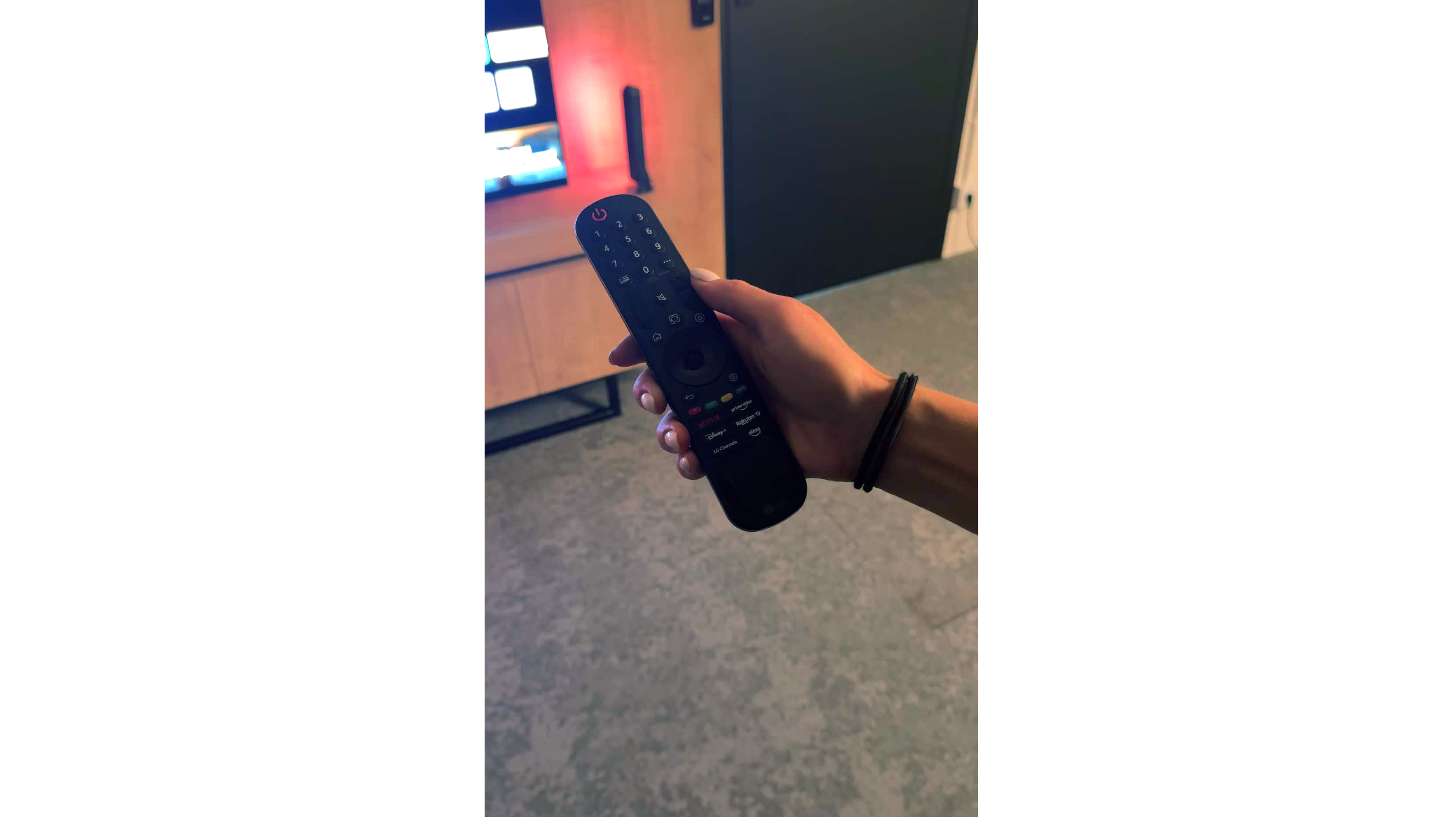
Sony Bravia 7 operates on the Google TV system, which offers an intuitive and fast interface, providing easy access to a multitude of applications. Google Assistant supports the Polish language, making television usage even more convenient and personalized. The interface is clear, and access to functions and applications is quick and hassle-free. It's worth mentioning the remote, which is charged via a USB-C port. Additionally, the remote is backlit, which greatly facilitates its use at night.
Sony Bravia 7 offers a wide range of capabilities that will satisfy most users. The ability to record programs and easily connect devices via Bluetooth are significant advantages. Unfortunately, it lacks the Picture-in-Picture (PiP) feature, which could be useful for watching two sources of video simultaneously.
XR70 stands out with its practical and elegant design. The television is equipped with a 4-position base that allows for adaptation to various spaces and settings – this is particularly useful when flexibility in interior design is desired. Additionally, the slim aluminum frame gives the device a modern and stylish appearance. Although it is not as sleek as some competing Korean models, it still looks very attractive and sturdy.
Classic Features
LG G5 has a lot to offer when it comes to classic TV features. Aside from the lack of the ability to watch two sources (PIP), the television performs well for everyday use. There are no issues with connecting external Bluetooth devices, such as headphones, and the EPG interface is very clear and understandable – even for those who are not particularly tech-savvy.
Smart TV Features
The Smart TV in the G5 operates on the WebOS system – it is the heart and brain of the entire television. Thanks to the Magic remote, using the G5 is truly enjoyable. We control the cursor on the screen with wrist movements, which is somewhat reminiscent of using a mouse in the air. The system itself is very comprehensive and offers everything one could expect: AirPlay, screen mirroring, voice search, and voice commands – all of these work smoothly and without delays. Without a doubt, this is one of the best operating systems in televisions on the market.
Note:
During our testing, we had practically nothing to complain about – except for one exception: the confusion surrounding the remote. Depending on the market and the specific version of the model, you may come across the new, minimalist Magic remote (without a numeric keypad), or the older version with a full set of buttons. We tested the G54LW model, which had the new Magic remote, but it is hard to say how the situation looks in other variants. Perhaps it is a similar situation to the LG C5 series, where the addition of the remote also depends on the specific market.
Playing files from USB
8.6/10
9/10
Supported photo formats:
Maximum photo resolution:

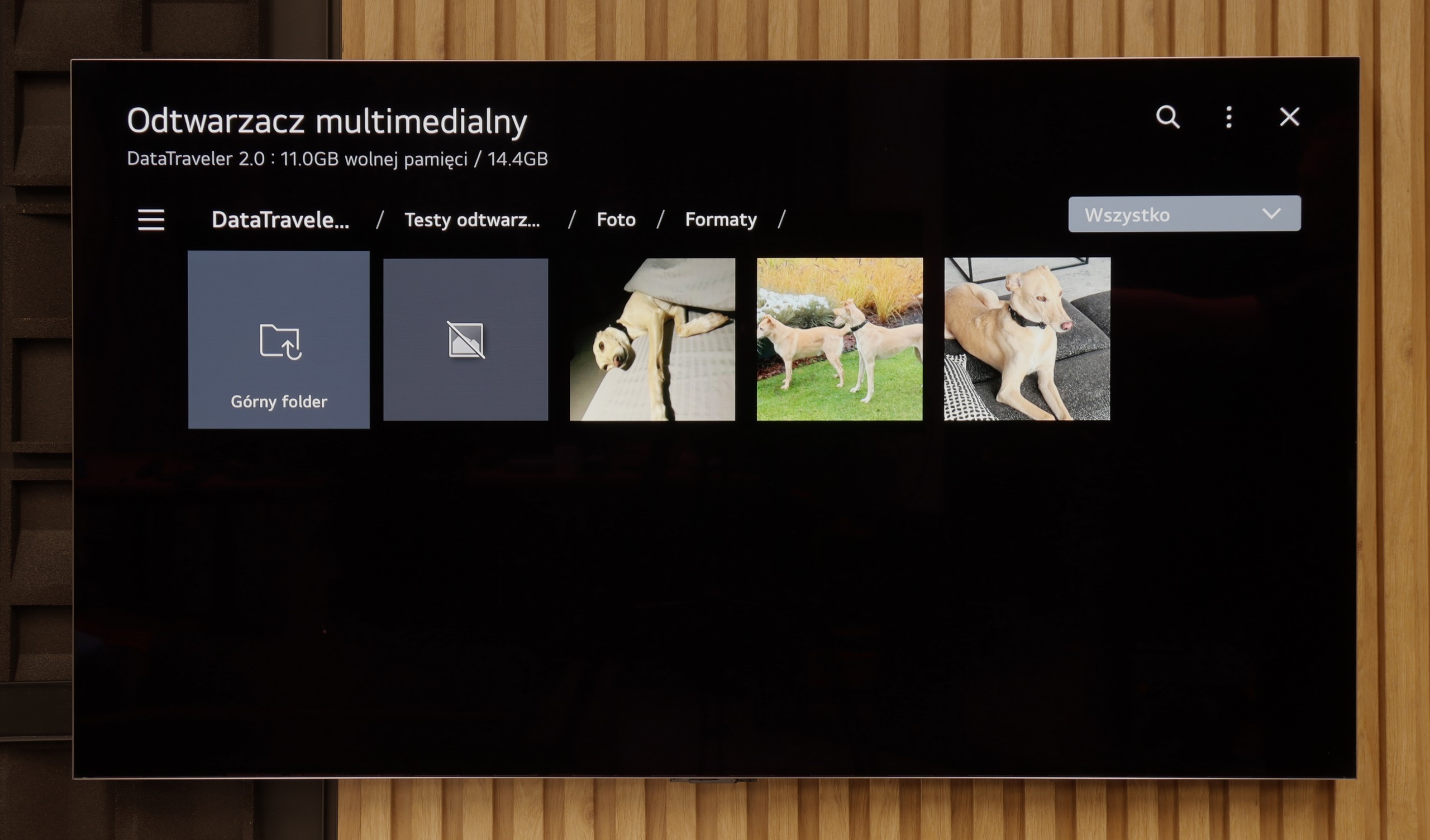
The built-in player handles most popular video and audio formats, allowing you to enjoy a wide range of content without any issues. Although there are minor shortcomings when playing photos, the Google TV system makes it easy to install other applications that effectively solve this problem and expand the multimedia capabilities of the television.
The built-in media player in the LG G5 is really very good. It supports virtually everything you would expect from a modern television – most popular formats work without issue, and the application performs quickly. Our only disappointment was the lack of support for very high bitrate HEVC files at 85 Mbit/s – similar to the C5 and B5 models. Interestingly, the same file worked flawlessly on last year's LG OLEDs, so it's hard to say what is behind this change. Nevertheless, in everyday use, the G5 will handle the vast majority of content, and there will be no need to connect any external devices for media playback.
Apps
9.6/10
9.1/10














































Sound
7.8/10
8.7/10
- Maximum volume--
- Dolby Digital Plus 7.1
- Dolby True HD 7.1
- Dolby Atmos in Dolby Digital Plus (JOC)
- Dolby Atmos in Dolby True HD
- DTS:X in DTS-HD MA
- DTS-HD Master Audio
Although the Sony Bravia 7 television is equipped with only a 2-channel speaker system (2.0), there are two speakers for each channel with a total power of 40 W. This provides really good sound quality, and the bass is noticeable, making watching movies and listening to music more enjoyable.
The sound on the LG G5, given its slim body, is truly phenomenal. When listening to music, a light, pleasant bass can be felt, and in movies, the dialogues are clear and easily heard – they do not get lost even in dynamic scenes. Unfortunately, a certain disappointment is the lack of support for the DTS format, which LG used in its older models. It's a shame, because many people with home theaters may see this as a step backward.


